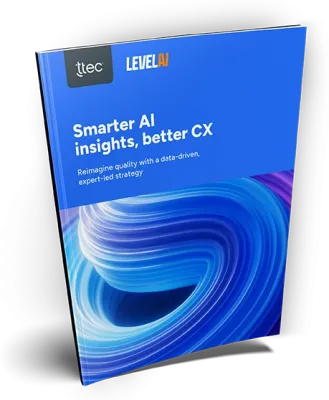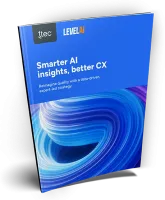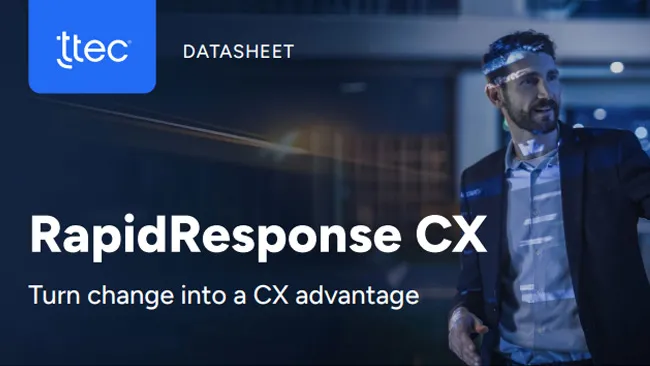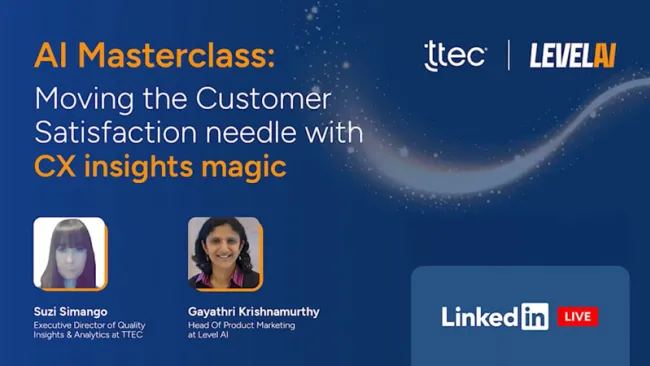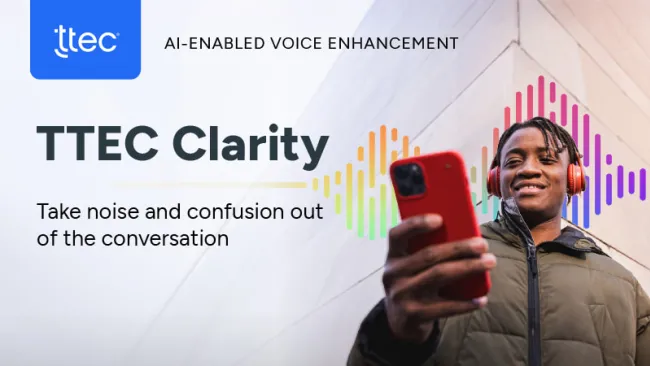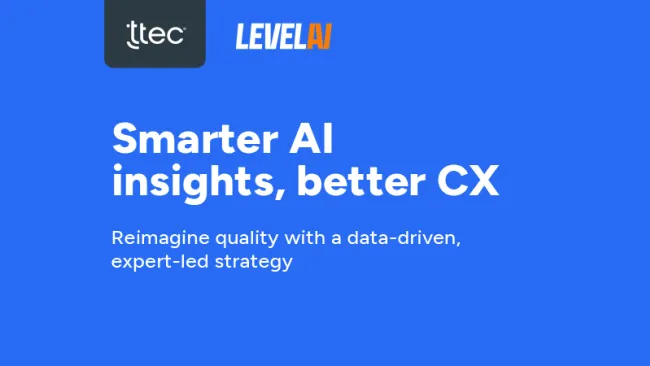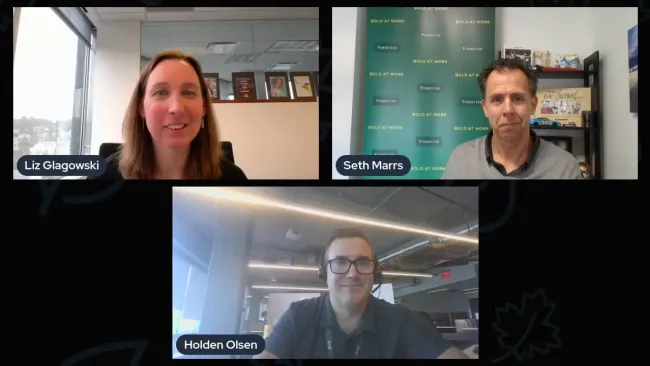You’d be off base to think the “A” in AI stands for automation, but you wouldn’t be entirely wrong to think: augmentation.
That’s because performance augmentation is proving to be one of the most consequential benefits of deploying artificial intelligence in the contact center and beyond, according to AI expert James “JB” Bednar, head of product development, TTEC. While many view AI’s primary value as using automation to unburden humans of tedious tasks, Bednar has seen firsthand how AI as an assistive tool has a surprisingly outsized positive impact on mediocre performers and new hires in the contact center.
As the featured guest of the recent LinkedIn Live webinar, “Who benefits from AI in the contact center?” Bednar shared some cool insights about how AI enables people to perform their jobs at a higher level than is possible without AI. Viewing AI through the lens of employees’ roles provides visibility to its practical value for specific tasks of front-line associates, team leads, CX leadership, and even the customer.
Bednar also tipped off webinar attendees to a hot opportunity in this space that if not seized upon, would constitute a “disservice” to their organization. More on that later.
Good get better, so-so get way better
“Augmentation really has legs,” Bednar told Elizabeth Glagowski, webinar host and editor in chief of the Customer Strategist Journal. “It is very different from a lot of the legacy technologies we used in contact centers where everybody would benefit.
“What we see is top performers benefit a little while mid-tier, bottom performers, and new hires benefit a lot better. It’s definitely something new and unique,” he said.
Indeed, in one deployment of TTEC’s proprietary, generative AI solution called Let Me Know, top-performing help desk associates improved average handle time (AHT) an incremental 5% and mid-level performers’ AHT boost was 2x better than that: 12%. Meanwhile, poor performers improved AHT a whopping 17% — more than 3x the AHT boost of high performers.
This example resonated with webinar attendee Liz Zaleski, customer engagement manager at American Fidelity, who commented, “AI could be beneficial in quickly highlighting recurring issues with a customer or interaction summaries. It can help set up the agent for success and help the customer in getting a fast and knowledgeable agent.”
“Absolutely,” Bednar replied. “That’s a great use case and one we are passionate about.”
He said contact center associates furiously take notes while navigating knowledgebases (and often multiple, disparate systems) to locate the resource materials they need all while trying to keep customers engaged in a conversation.
“That comes at an expense. It takes time. They’re distracted,” Bednar said. “They’re trying to juggle two things at the same time instead of focusing exclusively on the customer.” AI-driven summarization solutions using large language models (LLMs) create accurate, faster, and more consistent case notes than humans can produce, a quality boost that really matters when a customer calls multiple times to resolve an issue.
Enable speech analytics now
Bednar said every discussion with CX leaders is data-driven. Yet surprisingly, many organizations have not recognized the value of a powerful data-driven tool: Conversation and speech analytics.
“The barrier to entry has never been as low as it is right now in our space,” he said. “If you are not using it now, run — do not walk — and enable it now. You are doing yourself a disservice if you are not focusing on it.”
Bednar said the insights yielded by these analytics help organizations get to the root cause of many issues. While key performance indicators (KPIs) are great metrics to work toward, they are not the metrics on which business decisions should be made. Conversation and speech analytics unlock the data to produce intelligence upon which decisions can be made, with confidence.
For an intriguing glimpse at a roles-based approach to deploying AI to help people perform better in various jobs, watch the webinar replay and check out TTEC’s new Strategy Guide, “AI in the real world: Real solutions for real contact center stars.”

